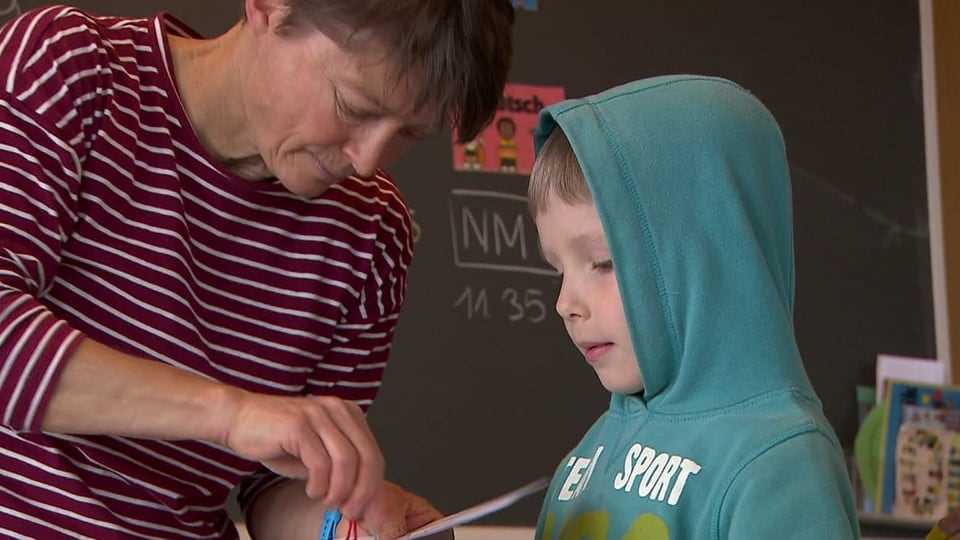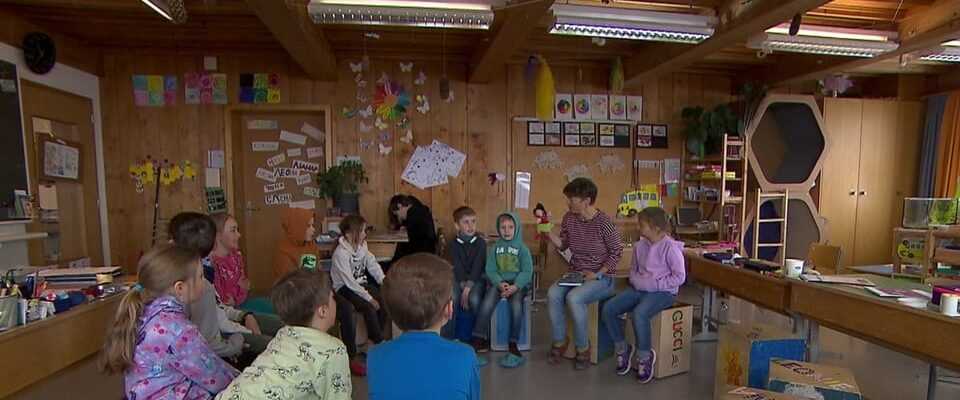contents
Hundreds of children from Ukraine go to school in Switzerland. The will is great, as is the challenge.
Their names are Ilia, Timofi and Ivanka, they are between five and seven years old and come from the Ukraine. The children have been attending classes at the Guttannen primary school in the Bernese Oberland for two weeks. They sit a little hesitantly in the morning circle and count to ten – in German. If they don’t know what to do, the new Swiss Gspändli will help them.
“Cool, now there are more children to play with,” beams 6-year-old Tonja. “It’s a process of growth,” says teacher Andrea Scherling. It is now even more chaotic and restless than usual. Her biggest challenge: “That I can respond to everyone as they deserve.”
My job is to please everyone.
It’s a challenge that schools across the country are having to face. Thousands of people, mainly women and children, are fleeing the war in Ukraine. Many of them also come to Switzerland. They all need a roof over their heads, and for children it is also important that they can go back to school quickly.
Legend:
Integrate special class or children? Many cantons rely on the integrative model whenever possible.
SRF
The schools mainly rely on two models for teaching: either the Ukrainian children go straight to regular classes, as in Guttannen, or they first attend a so-called reception class, as in Küsnacht ZH.
In the pavilion of the Erb School in Küsnacht near Zurich, the Ukrainian students are among themselves and cramming German. “New children come every day,” explains school president Klemens Empting. Because there are too many for the regular classes, Küsnacht has created a separate class for them. They stay there until they can speak German well enough to attend regular classes.
Improvised but motivated
The lessons are held by retired high school teacher Roland Heer together with Julia Alexeenco, a native of Ukraine who has lived in Switzerland for a long time. Improvisation is the order of the day, says school president Klemens Empting. For teacher Heer, it is a means of countering one’s own powerlessness. Not just passively reading terrible news in real time, but taking action.
It’s a good way to bring out what I can.
For the children from the Ukraine, German is an unfamiliar language with very strange sounds for them: “öööö”, “üüüüü”, the teenagers practice on their very first morning at a Swiss school, they giggle a little in embarrassment. Despite the giggles, the motivation is high and the lessons are well received: “It’s very important that we learn German, even if we don’t know how long we’re going to stay. I liked the lesson and I want to continue,” says Julia Alexeenco, summing up the 13-year-old Elyzaveta.

Legend:
German as a foreign language: The Ukrainian children, but also the teachers, achieve a lot.
SRF
Everyone does their best, in Zurich, in Küsnacht, in Guttannen. However, difficulties such as language barriers do not disappear overnight. Children communicate primarily through sign language. “You have to get used to it,” says 11-year-old Seraina Kauffmann from Guttannen. Growing together takes time.
